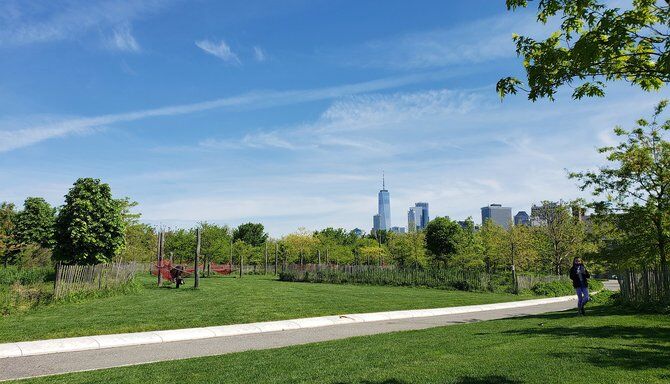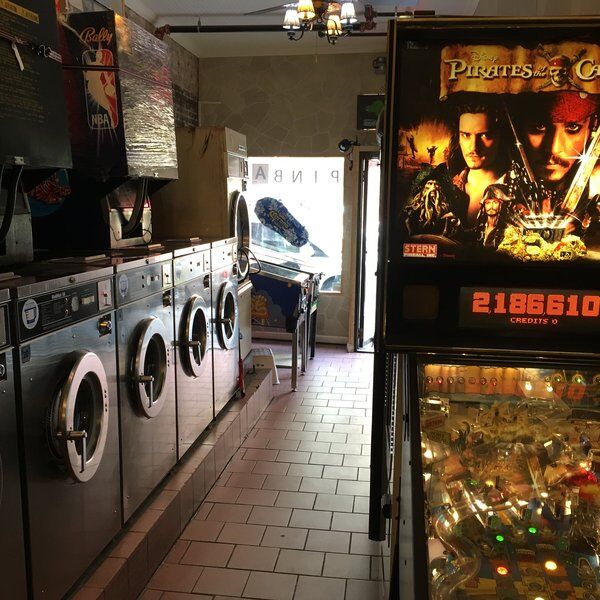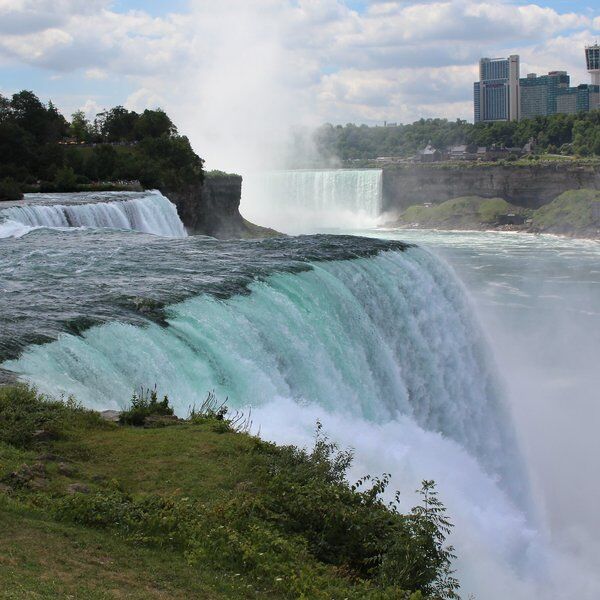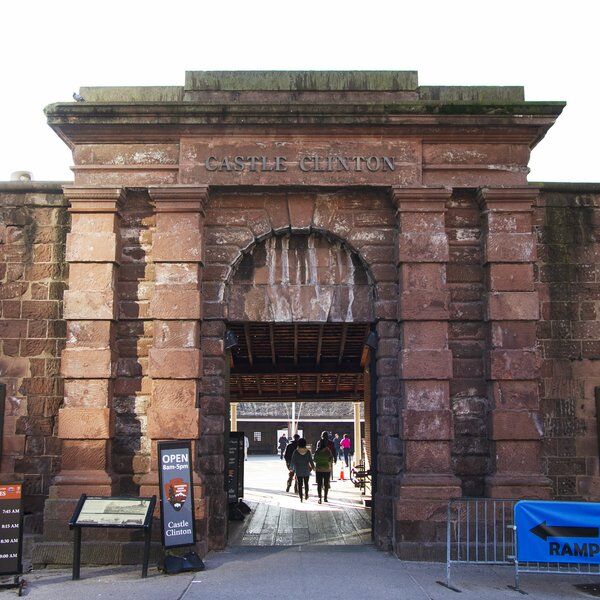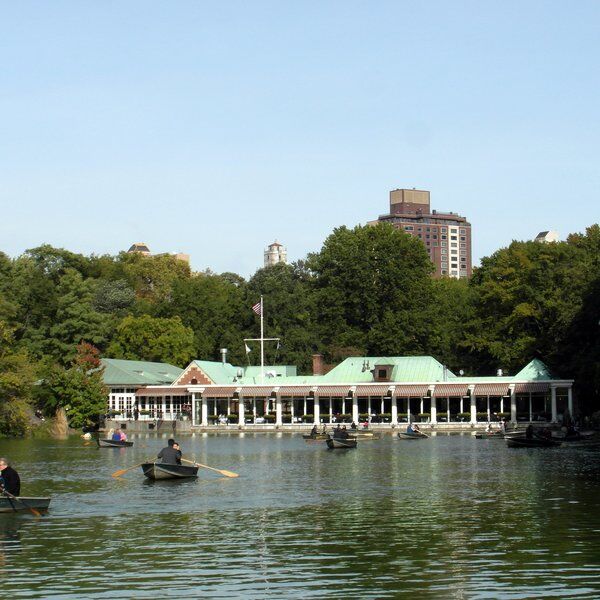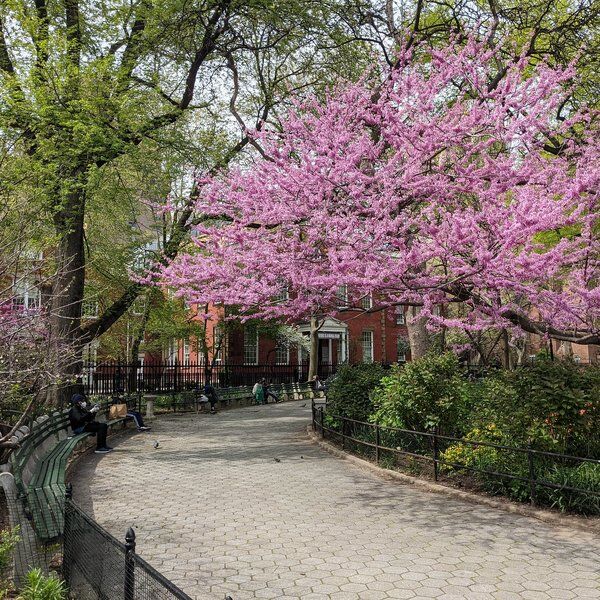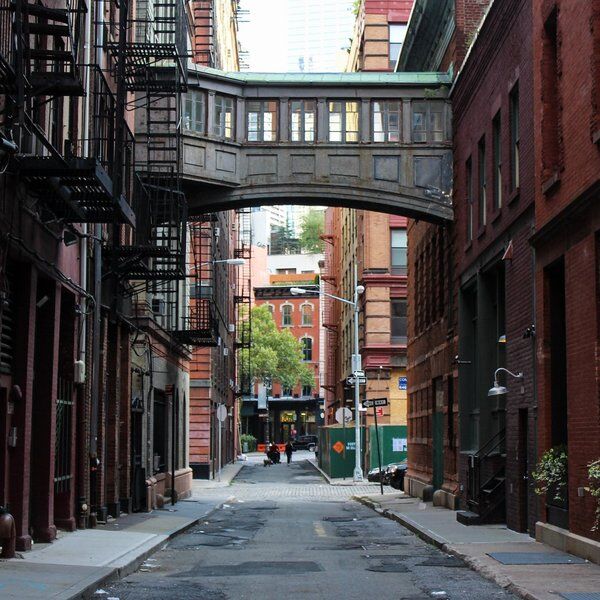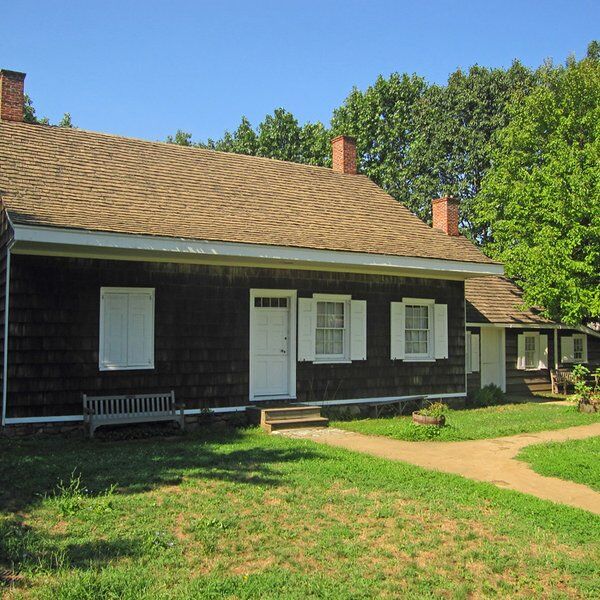Discover Hammock Grove on Governors Island
If you’re looking for a unique way to unwind in New York City, look no further than Hammock Grove—a hidden gem on Governors Island that’s as quirky as it is serene. But wait, what is Governors Island?
Before we dive into the magic of Hammock Grove, let’s set the scene. Governors Island is a sprawling 172-acre oasis located just off the southern tip of Manhattan. Once known by names like Paggank (which means "Nut Island" in the native Lenape language) and Noten Eylandt during Dutch times, the island has evolved from a strategic military base into a public park that welcomes over 800,000 visitors each year. Today, it’s easily accessible by ferry from both Manhattan and Brooklyn.
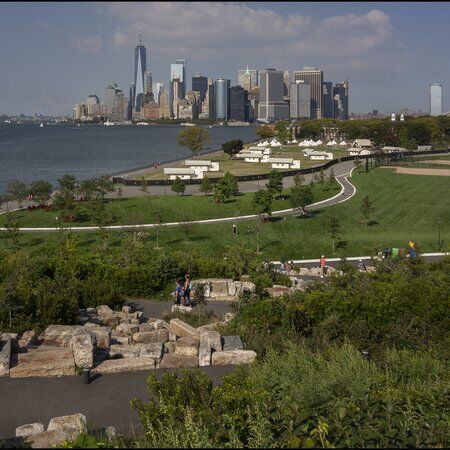
A Brief History of Governors Island
Governors Island has a story as colorful as its red hammocks in Hammock Grove. Let’s rewind the clock and explore the island’s fascinating past.
Colonial Beginnings
Long before New York became the buzzing metropolis we know today, Governors Island was a modest patch of land dotted with inlets and hardwood groves. Its original name, derived from the abundant nut-bearing trees, hints at its wild, natural beauty.
Early European explorers like Giovanni da Verrazzano spotted the island as early as 1524, and by 1624, it was the landing spot for the first settlers of New Netherland. These pioneers, arriving from Amsterdam, set up camp with hopes of carving out a new life in what would later become New York State.
Over time, as the Dutch and then the English took hold of the region, the island’s name morphed from Nutten Island to the more official-sounding Governors Island—a nod to its use as a retreat and resource for colonial governors.
War, Forts, and Revolution
As the winds of revolution began to blow, Governors Island found itself at the heart of military strategy. Early fortifications were sketched out in the mid-18th century, and by the time of the American Revolution, the island was buzzing with military activity. General George Washington’s forces even ramped up the defenses here, installing earthworks and cannons to fend off the British.
The island’s strategic position meant that it played a role in some of the era’s most intense moments, from daring submarine experiments (yes, the first-ever sub attack!) to cannon battles that sent echoes across New York Harbor. Despite this, the British eventually recaptured the island.
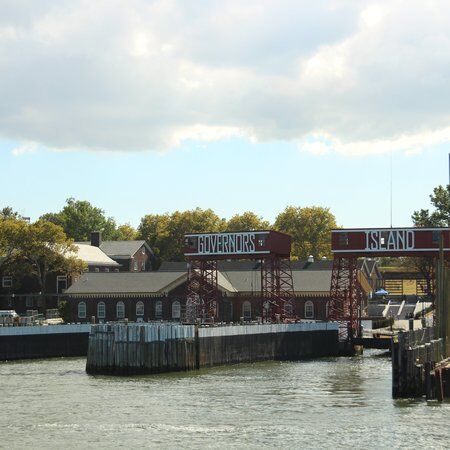
19th-Century Transformations
After the Revolutionary War, Governors Island transitioned from a battlefield to a military hub. By the late 1700s and into the 19th century, the island was being reshaped with fortifications like Fort Jay (originally known as Fort Columbus) and Castle Williams—both designed to protect New York Harbor.
As America grew, so too did the military presence on the island, with new structures and facilities sprouting up to meet the needs of an evolving nation. It was a period of rapid change and innovation, where old wooden barracks gave way to more permanent structures and even a few recreational areas like tennis courts, a racetrack, and picnic spots emerged.
About the Coast Guard
In 1965, the Army finally packed up its gear, and the island became the largest base for the U.S. Coast Guard. Suddenly, Governors Island wasn’t just about forts and cannonballs—it was home to a lively community complete with schools, movie theaters, and even a fast-food joint or two.
The Coast Guard transformed the space, adding marinas, training schools, and even a quirky bit of local culture that included everything from polo fields to the “world’s crookedest” golf course. Notably, the island also hosted presidential meetings and international summits.
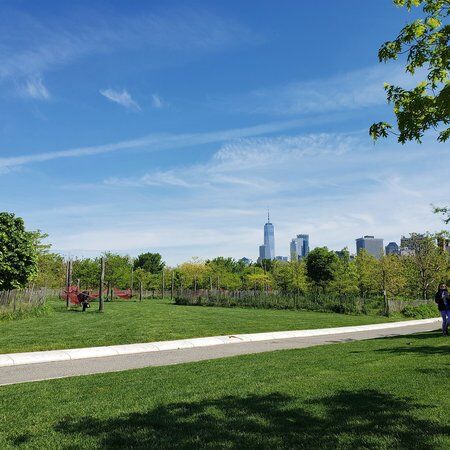
Redeveloping Governors Island
When the Coast Guard finally packed up and left in the mid-'90s, everyone knew something big was about to happen on Governors Island. The island’s future hung in the balance, and a whirlwind of creative ideas soon emerged.
Early Ideas
Proposals for Governors Island ranged from a casino and hotel to a public museum, an educational campus, or even a nightclub district! One design contest, hosted by the Van Alen Institute in 1996, attracted over 200 submissions as creatives from all over shared their visions for the island. Finally, an agreement between the city and state ensured that Governors Island would remain a public space.
In a last-minute move, President Clinton designated 22 acres, including the iconic Fort Jay and Castle Williams, as a National Monument in 2001. By 2003, the rest of the island was sold for a symbolic $1 and placed under new management, with strict rules ensuring that permanent housing or casinos would never be established there.
Phases of Transformation
By 2005, the public got a taste of what was to come as Governors Island opened its doors on summer weekends. Early visits were free, with bikes and ferries on the house, inviting thousands to experience the magic firsthand.
The real transformation kicked off with design competitions in 2007. Finalists, including the renowned West 8 team, pitched plans that balanced historic preservation with modern amenities. Their vision? Open green spaces, creative art installations, free bike rentals, and even custom-built artificial hills to break the island’s windy monotony.
As renovations rolled out in phases, highlights emerged: upgraded ferry docks at Soissons Landing, a reimagined Parade Ground perfect for lawn sports, and a restored Historic District bursting with character. By 2016, major projects like the Oyster Pavilion and the expansive Hills park were in full swing, drawing visitors by the hundreds of thousands.
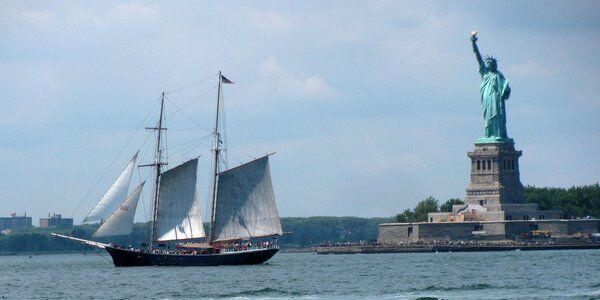
Features That Make Governors Island Unique
Fortifications
A visit to Governors Island isn’t complete without exploring its military relics.
- Fort Jay: Perched on the island’s highest point, Fort Jay is the oldest fortification, originally built in 1794 and rebuilt over the years. Its sturdy sandstone and granite walls, complete with an arrow-shaped ravelin and dry moat, whisper stories of colonial battles and strategic defenses.
- Castle Williams: Over on the northwestern edge, Castle Williams impresses with its four-tiered cylindrical design. Built between 1807 and 1811, this fortress once boasted space for over 100 cannons, serving as a formidable guardian of New York Harbor.
- South Battery: Down by Buttermilk Channel, this smaller fortification has played many roles over time—from a military outpost to an officer’s club.
Open Landscapes
Governors Island doesn’t just contain historical relics. Its open spaces provide a perfect blend of relaxation and recreation.
- Northern Area: Stretching out from Fort Jay is a vast, treeless glacis—a grassy expanse that once buffered the fort’s walls and today hosts a polo field and even remnants of a historic golf course.
- Nolan Park: Just southeast of Fort Jay, Nolan Park (named after a military general) offers a formal, tree-lined stroll among charming former officers’ residences.
- The Parade Ground and Lavender Field: Adjacent to Nolan Park lies the expansive Parade Ground—a versatile space that’s served as both a training field and a site for execution in bygone days. Overlooking Buttermilk Channel is New York City’s one-of-a-kind lavender field.
- Southern Area: Here you’ll find Hammock Grove, a favorite relaxation spot, alongside the playful Play Lawn and the Hills—four artfully designed mounds with trails, slides, and views of the harbor.
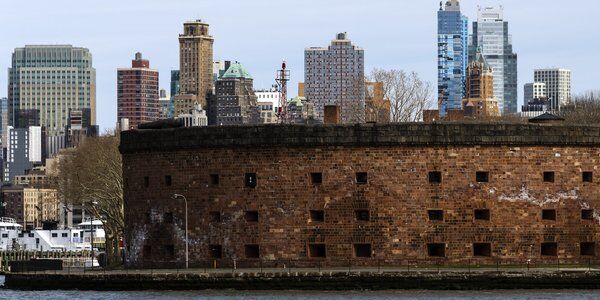
Architecture and Repurposed Structures
Governors Island is a mix of historic structures and modern adaptations.
- Historic Residential Quarters: Clusters of low-rise officers’ housing, like the Colonel’s Row and the stately buildings around Nolan Park, now host arts organizations, community programs, and cultural exhibits, bridging the gap between past and present.
- Civic and Cultural Spaces: The island is home to unique venues such as the Arts Center, housed in a renovated ordnance warehouse, where galleries and performance spaces keep the creative spirit alive. Meanwhile, former military buildings have found new life as offices, studios, and community centers.
- Innovative Projects: There are several modern touches, like the planned climate research lab designed by Stony Brook University and the new restaurant and event spaces.
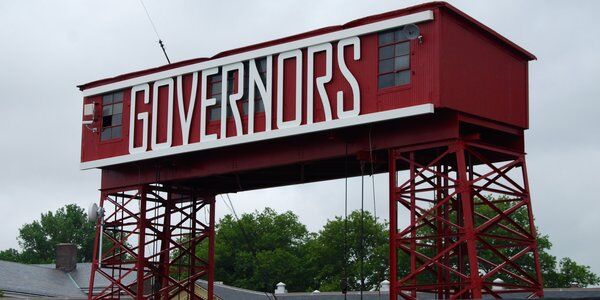
Hammock Grove: The Best Thing to Do on Governors Island
When it comes to activities, Governors Island offers an array of fun but one stands out amongst the rest:
Chill Out in Hammock Grove
Hammock Grove is an inviting 10-acre green space filled with 50 bright red hammocks. Imagine kicking back in one of these woven red hammocks while taking in sweeping views of the Statue of Liberty and the Lower Manhattan skyline. This is your go-to spot for total relaxation. It’s a place where the stress of daily life seems to melt away amid the soft rustle of the grass and the gentle sway of the hammocks.
As you settle in, don’t be surprised if you spot a few local characters—like the friendly sheep grazing in the nearby meadows. A leisurely stroll along the winding pathways might also reward you with glimpses of “The Hills”. Its nature, art, and history all rolled into one charming location.
Got a book that’s been calling your name? Hammock Grove is the ideal spot to combine your love for literature with the beauty of the outdoors. Nestled between the vibrant food trucks at Liggett Terrace and the expansive play fields, this haven of hammocks is a picturesque backdrop to enjoy your favorite story or simply watch the world go by.
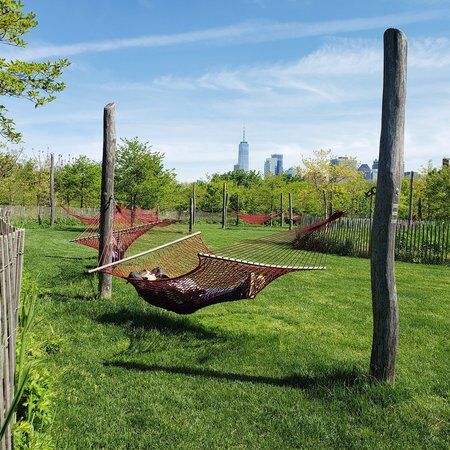
Other Things to do on Governors Island
Bike the Seven-Mile Loop
Get your wheels turning along the island’s flat, paved loop that hugs the waterfront. You can bring your own bike, snag a Citi Bike for a quick $5 ride, or rent one from Blazing Saddles (which even offers pedal-carts and surreys). Along the way you’ll enjoy epic views of Lower Manhattan and the Statue of Liberty.
Top tip: if you’re lucky, you might catch a free one-hour rental on a weekday morning!
Visit Outlook Hill
At 70 feet tall, Outlook Hill is the island’s highest vantage point. Trek up its winding path or scramble over granite rocks—affectionately dubbed the “scramble”—to be rewarded with panoramic views of New York City’s skyline.
Get Your Hands Dirty at the Teaching Farm
For those with a green thumb, the Governors Island Teaching Farm is a must-see. Managed by GrowNYC, this one-acre farm offers a hands-on glimpse into sustainable urban farming. It’s educational, inspiring, and a great way to reconnect with nature right in the heart of the city.
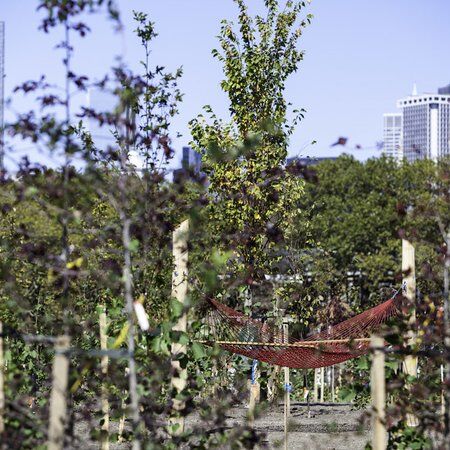
Picnic Point
Why settle for a regular park when you can picnic with a view? Picnic Point, located at the southern tip, boasts unmatched vistas of the Statue of Liberty. Spread out a blanket, fire up a rented grill (just remember to book in advance), or indulge in the island’s rotating lineup of food trucks for a delicious bite.
Discover Public Art Installations
Governors Island is dotted with a vibrant collection of public art installations. From thought-provoking exhibits that tackle social themes to interactive, kid-friendly pieces, there’s always something new to inspire your creative side. Check out “The Open Orchard” and keep an eye on the Governors Island Arts website for the latest happenings.
More Must-Do Activities
- History: Explore landmark sites like Liggett Hall—a colossal building once home to an entire army regiment.
- Seasonal Events: Depending on when you visit, you might catch the Jazz Age Lawn Party, Earth Day celebrations, or even a winter village complete with ice skating and fire pits.
- Food and Drink: With a smorgasbord of eateries—from waterfront taco joints and trendy cafes to gourmet pizza and craft beer gardens—there’s no shortage of delicious options to fuel your adventure.
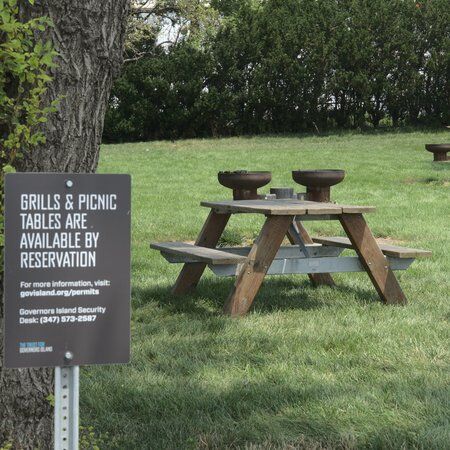
Visiting Hammock Grove
Open daily from 7:00 am to 6:00 pm, it’s easily accessible via daily ferries from Manhattan or Brooklyn. Here’s what to expect:
Practical Perks
- Easy Access: Ferries run daily from key locations like the Battery Maritime Building.
- Food Options: Besides the many picnic tables scattered around, you can explore an array of food vendors offering everything from casual snacks to gourmet meals. (Just remember, no outside alcohol allowed!)
- Accessibility: The island is designed to be wheelchair-friendly, with accessible ferries, restrooms, and even an on-site tram during the summer.
Pssst! The Grove isn’t just for relaxation—it also features playful areas where kids can climb and swing on fun play structures. It’s a family-friendly retreat where everyone can find a spot to unwind.

Explore Beyond Hammock Grove with CityDays
While Hammock Grove is the pinnacle of relaxation in New York, the city is packed with so many other experiences waiting to be discovered. And that’s where CityDays comes in!
At CityDays, we delve deeper into the city's hidden gems and iconic landmarks, with unique scavenger or treasure hunt tours.
Scavenger Hunt tours are a great way to bring family and friends—or even dates and colleagues—together for an afternoon of great fun and adventure, solving clues and snapping photos. Clues will lead you to the big sights and those that you'd walk straight past.
For more information about our New York Hunts then click here: NYC Scavenger & Treasure Hunts | CityDays.
